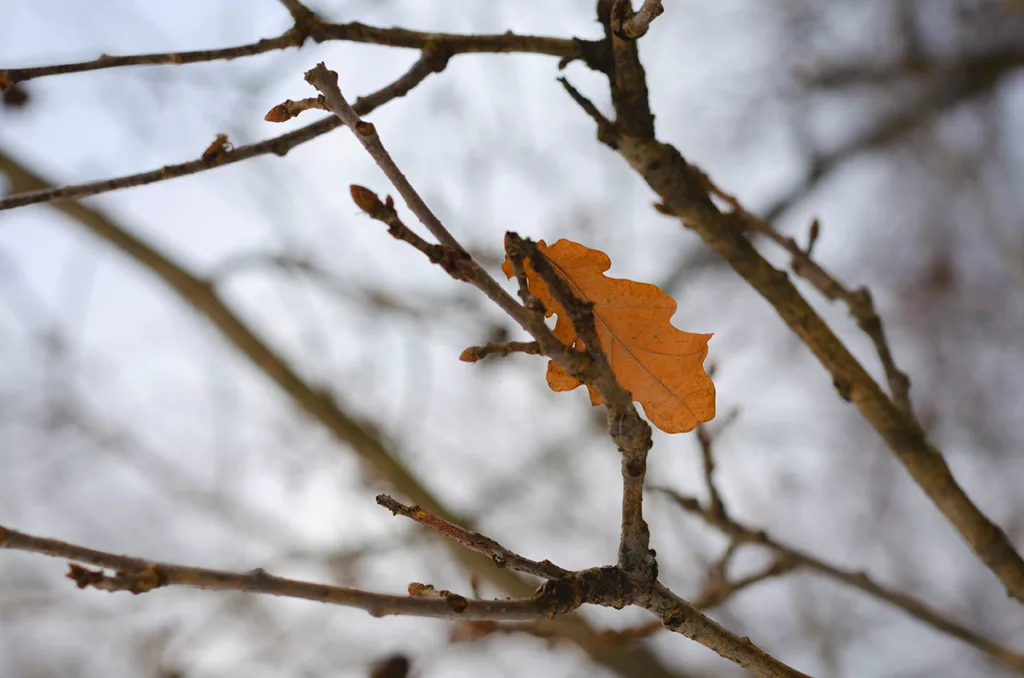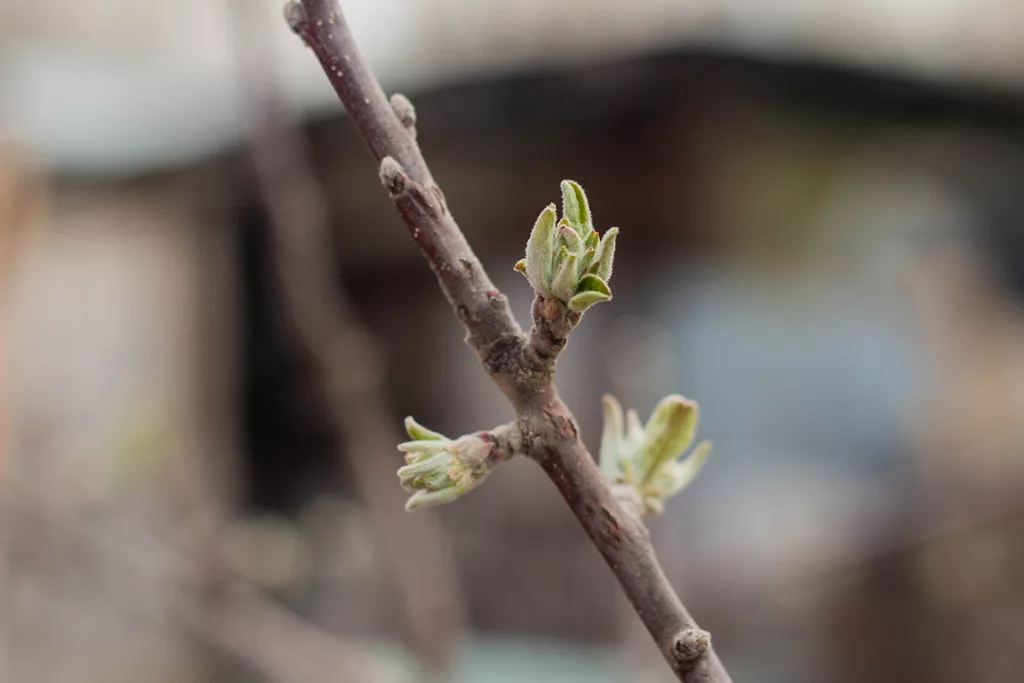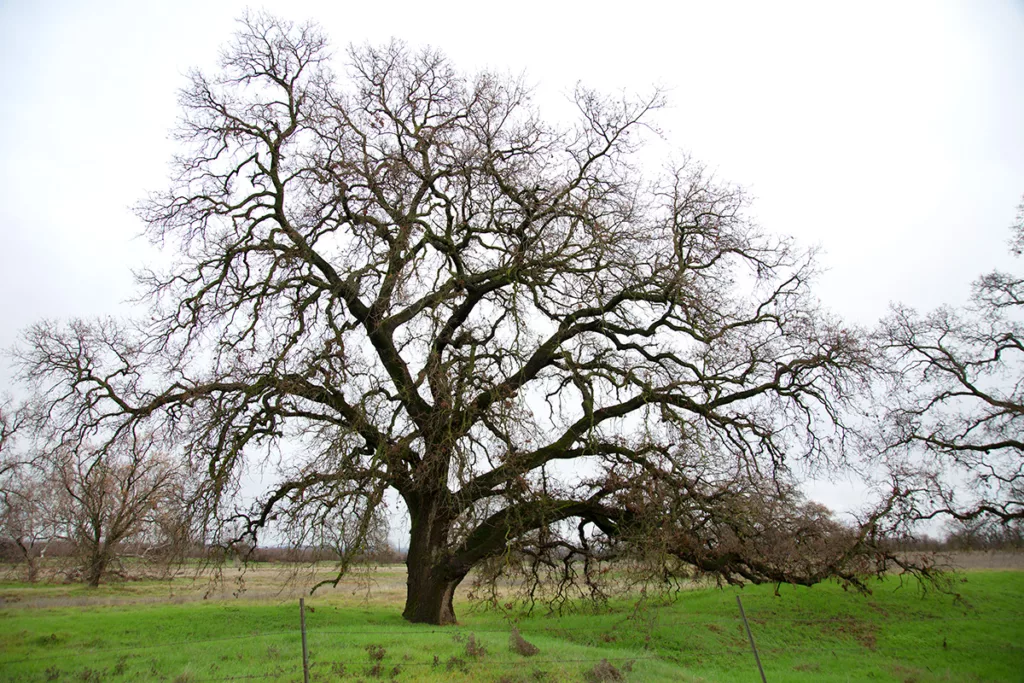Witnessing your Sonoma County trees change color in the fall is a magical experience, but there’s more to this transformation than beauty alone. For deciduous trees that drop their leaves every year, autumn is all about preparing for dormancy. This article explains when and why trees go dormant in Sonoma County, and provides some tips to help you care for your trees during this time.
Why Do Trees Go Dormant?
Sunlight is less prevalent during colder months, which makes it challenging for trees to get all the nutrients they need to survive. So, instead of spending valuable energy growing leaves, a deciduous tree will drop its leaves to save water and food throughout the winter. This conservation period is called dormancy.
Shorter days, longer nights, and lowered soil temperatures naturally stimulate a tree into entering dormancy. Evergreen trees will never go completely dormant, but most deciduous trees lose their leaves in the fall.
Tree Dormancy in Sonoma County

Sonoma County is home to many deciduous trees, including bigleaf maples, California valley oaks, California buckeyes, and more. You can generally expect these species to lose their leaves in mid-October, although oaks may keep their leaves attached for longer.
Sonoma County deciduous tree species tend to go dormant in the winter after spending autumn dropping their leaves.
Benefits of Tree Dormancy
Dormancy is beneficial for your trees because it causes them to enter a state of reduced metabolic activity, slowing down their growth processes. This conserves energy for when conditions improve in the spring, which is a tree’s active growing season.
By entering a dormant state during the winter, trees can time their bud break and flowering to coincide with more favorable conditions in the spring. This synchronization ensures successful pollination, which leads to the production of seeds and fruits.
Dormancy also helps trees survive the winter. To outlast harsh weather and cold temperatures, a dormant tree will redirect its resources to sensitive parts like buds and young branches to protect them from frost damage. This natural survival strategy enables trees to endure unfavorable conditions and ensure their long-term survival in different climates.
How To Tell if Your Tree Is Dead or Dormant

Since a tree loses its leaves when it dies, this can make it challenging to tell the difference between a dead tree and a dormant tree. This differentiation is especially important during the winter when you should be monitoring the condition of your trees.
Luckily, if you know what to look for, there are a few ways you can tell if your tree is dead or dormant. Here’s how:
- If a tree is dead, the branches will be dry, brittle, and easy to snap.
- If a tree is dormant (alive), the branches will bend and be harder to snap, and the inside will be green. It will also have leaf buds.
How Can You Care for Your Trees During Dormancy?
One of the best ways to care for your Sonoma County trees during dormancy is with dormant pruning. Dormancy is a great time of year for pruning your trees, and it offers many benefits that help them survive the winter months.
Here are some of the advantages of pruning your trees during dormancy:
- Limit pests: Invasive tree pests love open pruning wounds. However, during the winter months, most of these species are also dormant. This means that winter pruning has a reduced likelihood of inviting a pest infestation.
- Promote faster healing: Your trees aren’t actively growing during dormancy, which means they have more energy to allot toward recovering quickly from pruning wounds. This allows them to dedicate more resources to foliage and limb growth in the spring.
- Maintain safety: Having your trees pruned during dormancy can remove risky limbs that might fall during harsh winter weather.
- Less sap activity: Dormancy causes trees to manage their water differently, which affects the sap inside. Fresh pruning cuts won’t bleed as much during the winter.
- Reduced stress: Pruning your tree during dormancy will put it under less stress than it would undergo during its active growing season.
Your Answer to Personalized Tree Care in Sonoma County
Vintage Tree Care’s friendly team of certified arborists has the experience needed to give your trees the care they deserve this upcoming dormancy season. From pruning and trimming services to thorough health checks, our arborists are ready to give you top-notch comprehensive tree maintenance services that will keep your trees both beautiful and healthy.
To learn more about what we can do for you, contact us online or give us a call at (707) 495-4686 so we can chat.


